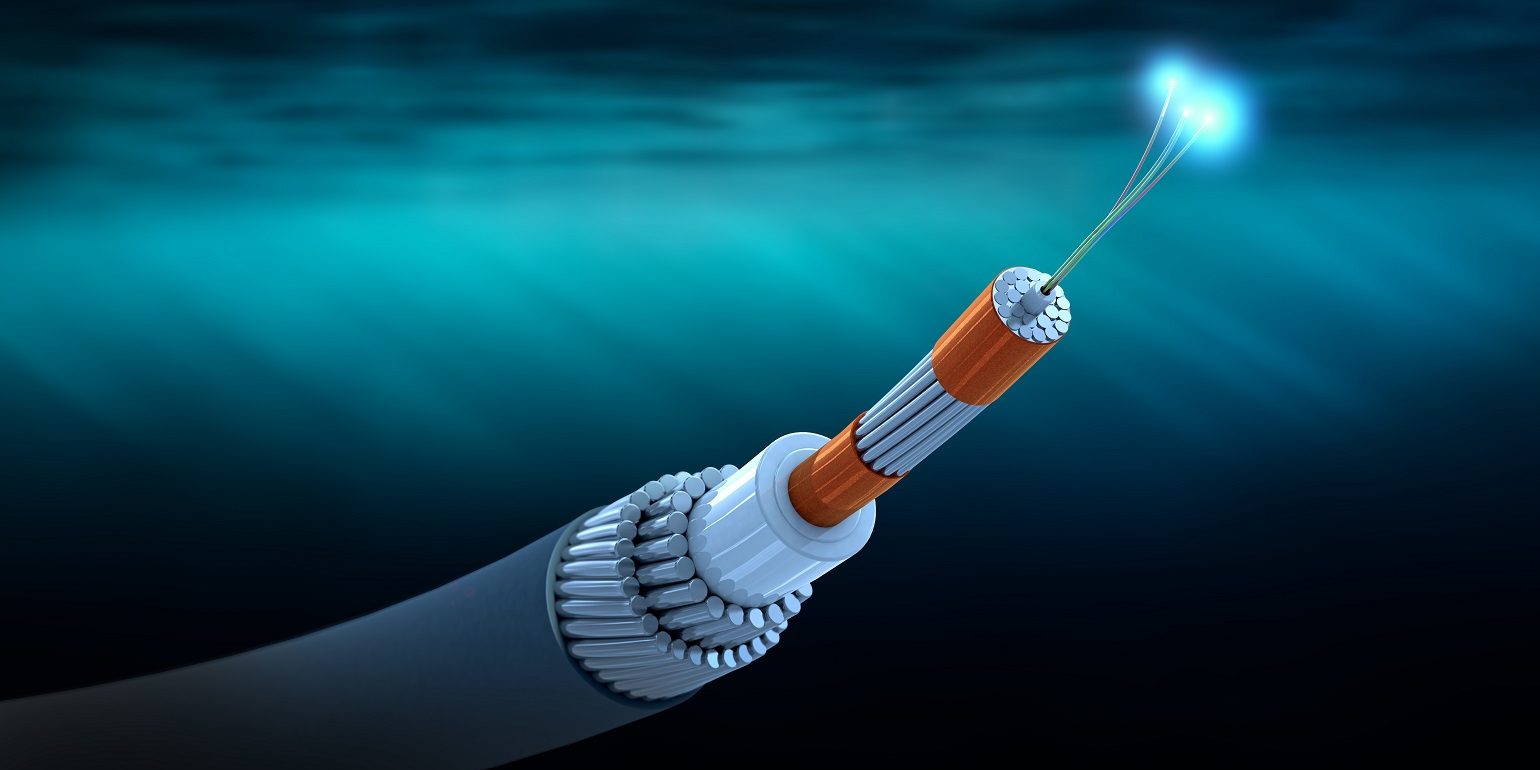As 2021 nears its end, DRG can’t help but notice how busy all of us are across the industry and ponder some important changes that lie ahead, many of which we expect will be discussed at the upcoming PTC conference.

Cross section of a submarine communications cable – 3d illustration
- Submarine cables have unambiguously now established themselves as critical infrastructure. Not only have they proved their importance particularly over the last 2 years, but they’ve also enabled the acceptance of a spectrum of new e-services that are now supporting more efficient, healthier and greener living and new ways of doing business. Many industries, including the submarine cable industry, have found new ways to continue to thrive, despite COVID, through the communication services supported by the global undersea cable network.
- The demand for submarine cables around the globe continues to grow, driven by steadily increasing capacity demand and the necessity of route diversity. TeleGeography’s Interactive Submarine Cable Map currently tracks $8+ billion in new subsea cable investments for the three years to come. Historical market cyclical variations (including market lulls) appear to be lessening, especially in the largest markets, as new cables are being built in every region across the globe. While the overall level of new cable construction is still nowhere near its all-time high two decades ago, demand is seriously stressing today’s industry resources.
- The industry is attracting new investment sources, most notably infrastructure funds, who take a longer-term view of the opportunity and see value in combined data center and subsea cable assets. Digital 9 Infrastructure acquired Aqua Comms; I Squared Capital acquired GTT; DigitalBridge and EQT together acquired Zayo; and so on. In May, investment expert David Stevenson wrote a piece in Citywire Investment Trust Insider titled “Put 10-20% of your assets in digital infrastructure.”
- While global network planners have not found any simple answers to today’s Pacific geopolitical challenges, new Transpacific and IntraAsia cables are underway to support the ever-present need for the world, as a whole, to communicate.
- Submarine cable system suppliers have gained sufficient confidence in the future that they have now started to expand their fleets to serve the growing market. The high level of capital required for ships reflects faith in the outlook ahead.
- Submarine cable developers have found ways, through increasing the number of fibers in cable networks, to delay the full impact of Shannon’s Limit on cable capacity. The resultant lower cost/bit of these new high-fiber count systems allows bandwidth-hungry digital services to become all the more affordable.
- High fiber count cables also mean the cost per fiber pair is much more affordable than ever before, potentially enabling fiber pairs to be economical for a much wider range of service providers than ever before. However, it’s not clear how much more these types of cost improvements can be stretched. Other design limits are now hampering further increases in fiber counts and the variable cost of fiber pairs is more significant than ever within the overall cost of a new cable.
- The growing size of the undersea mesh – especially in the largest markets – together with the interoperability with terrestrial networks and ever-improving management system technologies, is leading, in some ways, to a simplification of undersea network architectures. But it remains to be seen how the evolving global mesh network will grow and protect both these new high-fiber count cables and the recently-built cables (which have far less capacity). Meanwhile, it is clear that boom-era cables will be retired at an increasing rate- not only because of their age, but also because of their diminishing cost effectiveness in this overall context.
- The ability of subsea cables to potentially provide means of sensing changes in their own surrounding environment looks increasingly technically possible, but how this might evolve into products given perceptions of the broader implications, remains to be seen.
- Industry associations, such as SubOptic and ICPC, continue to expand their efforts to serve the subsea sector through their variety of initiatives (awareness, best practices, education, research, collaboration, and more).
- Efforts to support attracting new talent to our industry, as a complement to the spectrum of subsea cable expertise across the globe, are gaining traction. PTC has a long history of outreach and educational programs and the newly-formed SubOptic Foundation is now also working hard to support the effort.
Industry leaders are sure to discuss many of these trends during PTC’22 less than a month from now. We hope to see you there!

